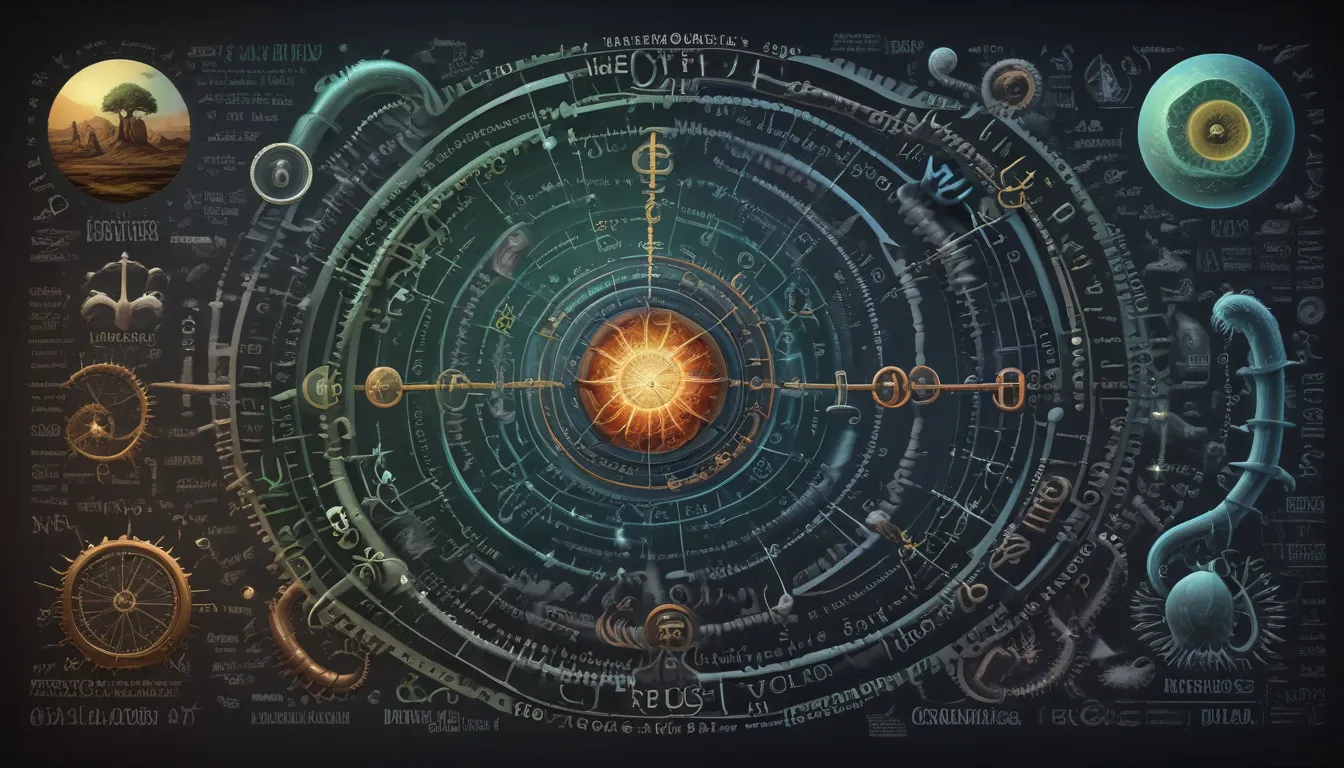A Note About Images: The images used in our articles are for illustration purposes only and may not exactly match the content. They are meant to engage readers, but the text should be relied upon for accurate information.
The Krebs Cycle, also known as the Citric Acid Cycle or the Tricarboxylic Acid Cycle, is a fundamental process in cellular respiration discovered by Sir Hans Krebs. This metabolic pathway plays a crucial role in generating energy for cells, acting as a power plant within the mitochondria.
Exploring the Intricacies of the Krebs Cycle
Let’s delve into 15 astounding facts about the Krebs Cycle that will deepen your understanding of this essential biochemical process. From its discovery to its significance in energy production, these facts will shed light on the fascinating intricacies of the Krebs Cycle. Whether you are a chemistry enthusiast or simply curious about the wonders of the human body, get ready to embark on a journey through the remarkable world of cellular respiration.
Key Takeaways:
- The Krebs cycle, also known as the citric acid cycle, is a vital process in our cells that produces energy in the form of ATP. It’s like a power plant for our bodies, converting nutrients into usable energy.
- Named after its discoverer Hans Krebs, the Krebs cycle is a key player in our body’s energy production. Without it, our cells wouldn’t have the energy they need to function, just like a car without fuel.
Unraveling the Mysteries of the Krebs Cycle
Let’s explore some intriguing facts that highlight the significance and complexity of the Krebs Cycle:
- The Krebs cycle, named after its discoverer Hans Krebs, is a series of chemical reactions that occur in the mitochondria of our cells. It is also referred to as the citric acid cycle because one of the key steps involves the formation of citric acid.
- Cellular respiration is the process by which cells convert glucose and oxygen into usable energy in the form of ATP. The Krebs cycle is the second step in this process, following glycolysis.
- The Krebs cycle produces three molecules of NADH, one molecule of FADH2, and one molecule of GTP (which can be converted to ATP) during each cycle. These high-energy molecules are utilized in the electron transport chain to produce a large amount of ATP.
The Intricate Steps of the Krebs Cycle
The Krebs cycle involves eight enzymatic reactions, each catalyzed by specific enzymes:
- Citrate synthase, aconitase, isocitrate dehydrogenase, alpha-ketoglutarate dehydrogenase, succinyl-CoA synthetase, succinate dehydrogenase, fumarase, and malate dehydrogenase are the enzymes involved in the Krebs cycle.
- The first step of the Krebs cycle involves the condensation of acetyl-CoA with oxaloacetate to form citric acid, catalyzed by the enzyme citrate synthase.
- During the Krebs cycle, citric acid undergoes a series of oxidations, resulting in the production of energy-rich molecules such as NADH and FADH2. These molecules carry high-energy electrons utilized in the electron transport chain to generate ATP.
The Essential Byproducts of the Krebs Cycle
The Krebs cycle produces important byproducts essential for cellular function:
- As carbon compounds are broken down and oxidized in the Krebs cycle, carbon dioxide is released as a waste product. This carbon dioxide is eventually expelled from the body through respiration.
- The Krebs cycle is a cyclic process, meaning that the starting molecule, oxaloacetate, is regenerated at the end of each cycle, allowing for continuous energy production in the cell.
Regulatory Mechanisms of the Krebs Cycle
The Krebs cycle is tightly regulated to ensure efficient energy production:
- Enzymes involved in the Krebs cycle are regulated by feedback inhibition and allosteric regulation by various metabolites such as ATP, NADH, and citrate.
- The Krebs cycle plays a crucial role in the metabolism of carbohydrates, fats, and amino acids, converting these macromolecules into intermediates for energy production.
The Significance of the Krebs Cycle in Organisms
The Krebs cycle is a highly efficient energy production pathway central to the overall energy metabolism of living organisms:
- Hans Krebs, a German biochemist, first described the steps and mechanisms of the Krebs cycle, earning him the Nobel Prize in Physiology or Medicine in 1953.
- Together with glycolysis and the electron transport chain, the Krebs cycle is vital in efficiently extracting energy from nutrients for cellular processes.
The Essential Role of the Krebs Cycle in Human Health
The Krebs cycle is integral to the functioning of the human body, ensuring the production of energy required by all cells:
- Without the Krebs cycle, our cells would not be able to generate sufficient energy to carry out their functions, leading to severe metabolic dysfunctions.
- The Krebs cycle, being an aerobic process, requires oxygen to proceed and is essential for the overall energy metabolism of living organisms.
Conclusion
In conclusion, the Krebs Cycle is a crucial metabolic pathway that occurs in the mitochondria of cells, playing a vital role in the production of energy by breaking down carbohydrates, fats, and proteins. Understanding the Krebs Cycle is essential for comprehending the intricate processes involved in cellular respiration and the generation of ATP. Through a series of biochemical reactions, the Krebs Cycle produces high-energy molecules that fuel the electron transport chain and ultimately lead to the production of ATP. Moreover, it generates essential intermediates used in various biosynthetic pathways, contributing to the synthesis of vital cellular components.
FAQs
Here are some frequently asked questions about the Krebs Cycle:
-
What is the Krebs Cycle?
The Krebs Cycle, also known as the citric acid cycle or tricarboxylic acid cycle, is a series of chemical reactions that occur in the mitochondria of cells. It is an essential part of cellular respiration, responsible for breaking down carbohydrates, fats, and proteins to produce energy. -
How does the Krebs Cycle generate energy?
The Krebs Cycle generates energy by oxidizing acetyl-CoA, derived from carbohydrates, fats, or proteins. Through a series of reactions, high-energy molecules such as NADH and FADH2 are produced, fueling the electron transport chain and resulting in the production of ATP. -
What are the intermediates produced during the Krebs Cycle?
Several intermediates, including citrate, isocitrate, alpha-ketoglutarate, succinyl-CoA, succinate, fumarate, malate, and oxaloacetate, are produced during the Krebs Cycle. These intermediates play crucial roles in other metabolic pathways and biosynthetic processes. -
What is the significance of the Krebs Cycle in cellular metabolism?
The Krebs Cycle is significant in cellular metabolism as it provides energy and produces intermediates used in the synthesis of amino acids, nucleotides, and other vital molecules. It ensures the continuous supply of energy and essential building blocks for cellular processes. -
How is the Krebs Cycle regulated?
The Krebs Cycle is tightly regulated by various mechanisms, including feedback inhibition and the availability of substrate molecules. Enzymes control each step of the cycle, ensuring efficient operation and response to the energy needs of the cell.
Exploring with Trust and Authenticity
Our commitment to delivering trustworthy and engaging content is at the heart of what we do. Each fact on our site is contributed by real users, bringing a wealth of diverse insights and information. Trust in our commitment to quality and authenticity as you explore and learn with us.






